Why Buyers Should Consider the ALTA Homeowner’s Title Policy
While many buyers spend a significant amount of time weighing up loans and homeowner’s insurance, few give much thought to the title policy from the title insurance agency. However, the right title policy can provide significant protections up to and beyond closing – and may still be working on the homeowner’s behalf when they go to sell their property in future!
If you’re a realtor, here’s what to know about the title policy products available to purchasers – and how you can advise your clients to make the best choice for their unique situation.
The three types of owner’s title policies

Title insurance policies protect your buyers against losses and damages associated with their property. In general, there are three different kinds of homeowner’s policies.
- The standard ALTA (American Land Title Association) Owner’s Title policy. This policy type protects buyers against title claims to the property. It provides protection over unpaid liens and other issues that occurred PRIOR to closing – but not beyond. In addition, it contains the “standard” exceptions for survey issues, mechanic’s liens, among other items.
- The extended ALTA Owner’s Title policy. This is the standard owner’s title policy with the standard exceptions removed. This is the policy most buyers obtain when they close at the title company (the escrow officer and processor perform the work necessary to remove the standard exceptions).
- The ALTA Homeowner’s Title Policy (“HTP”). This is a relatively new policy type that adds 22 new “covered risks” from the standard owner’s policy (the HTP has 32 covered risks; the Owner’s Policy has 10). Notably, this policy type includes certain coverages that extend beyond the closing date. It is written in plain, easy-to-understand language.
The ALTA Homeowner’s Title Policy arose out of increased demand for:
- Inflation protection – typically title coverage protects the initial investment (purchase price); it doesn’t speculatively cover how the property will appreciate in value over time. The HTP provides protection in a heavily inflated market, something that is currently on many buyers’ minds. It does this by increasing the coverage rate of 10% annually, up to a maximum of 150%. For example, if you bought a house for $300,000 in 2013 and had a complete loss of title today, you’d be paid out for $450,000 if you had the HTP, but only $300,000 with the standard Owner’s Policy.
- Protection against future risk of “title theft” – while no one can technically steal your title, bad actors can record fraudulent deeds to transfer the name and the county records to their own name, then take out a loan against the property or even sell the property to an unsuspecting buyer. Current title policies do not protect against this risk; the homeowner would need to retain an attorney to help them unwind the fraud – which can be a costly and time-consuming process. The HTP, however, provides protection for post-closing title theft risk – the title insurance company will step in and provide for and manage the legal restoration process.
- Eliminating special requests for endorsements – endorsements are documents that modify the standard coverage provided under the standard policy language. There are currently 48 ‘series’ of ALTA endorsements, with well over one hundred available. The HTP incorporates many of the commonly requested endorsements from educated purchasers.
The major benefits the ALTA Homeowner’s Title Policy provides include:
- Inflation protection (as discussed above).
- Survey coverage – without a survey. A typical residential survey costs anywhere from $500-800, and is generally required when obtaining a title policy to obtain survey coverage. This policy option allows us to provide survey coverage (to a degree) without the actual survey.
- Coverage against building permit violations, as well as against restrictions and zoning violations. These coverages can be added to a typical extended homeowner’s policy, but are included as standard in the ALTA Homeowners Policy. For example, if a municipal inspector determines that an improvement (like a deck) was installed without a permit and requires it to be removed, the HTP includes coverage for such a loss.
- Coverage for actual vehicular access to and from the land. A regular homeowner’s policy only covers access in a very broad away – a property may technically have access, but it in practice the access might not be accessible on foot or by vehicle.
- Coverage if a neighbor builds on a buyer’s land. Previously there was no way to protect against this risk, but an ALTA Homeowners Policy provides protection if a neighbor erects a structure on the buyer’s property after closing.
An overview of the difference in coverage between a standard and an ALTA policy can be seen here:


Because the ALTA Homeowner’s Title Policy goes above and beyond, there are some restrictions regarding when it can be issued. For example:
- The property must be a 1-4 family residential property (including condominiums).
- The insured must be a natural person (including an individual’s living trust). An LLC or Corporation will not be eligible.
- The property must be an improved property, not vacant land. New construction is okay.
- The policy must be fully underwritten. Municipal verification and surveys may be required if we determine there are unusual risks.
If issues are discovered that run counter to the above, the policy may need to revert back to a traditional Owner’s Policy.
If you’re an agent looking to provide greater protection for your clients, the ALTA Homeowner’s Title Policy is an excellent option. It not only provides peace of mind when closing, but also helps with resale value by ensuring your clients can complete the sale without concern for title problems.
The ALTA Homeowner’s Policy does have a higher premium and title service charges because of the additional coverages and work involved in underwriting those coverages. As an example, a $300,000 Owner’s Title Policy has combined premium & title service charges of $1,019.72; the Homeowner’s Title Policy combined fee is $1,245.65 – about $225 higher. However, when you factor in the inflation protection and the removal of the need for a survey, an ALTA Homeowners Policy actually ends up being a cheaper product – with better coverage. Effectively buyers are covered to 150% of what they’re paying for, and without a survey.
Additionally, the HTP doesn’t involve any extra legwork for the buyer or seller. A simple rider to the sale contract is provided for the seller to fill out – this checklist is very similar to the standard disclosures form and is quickly and easily completed. See a copy of the standard rider here. If this rider is completed, our team will review upon submission of the contract, and will confirm if the HTP can be issued.

